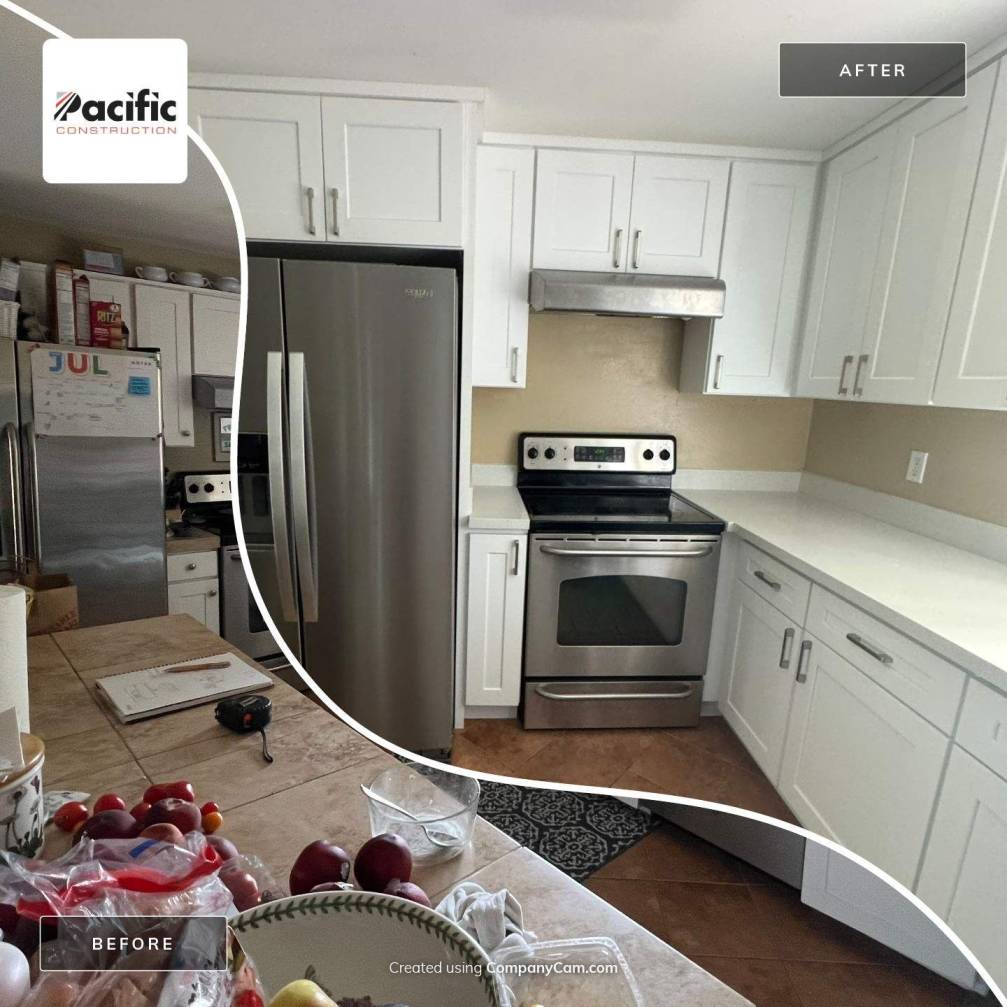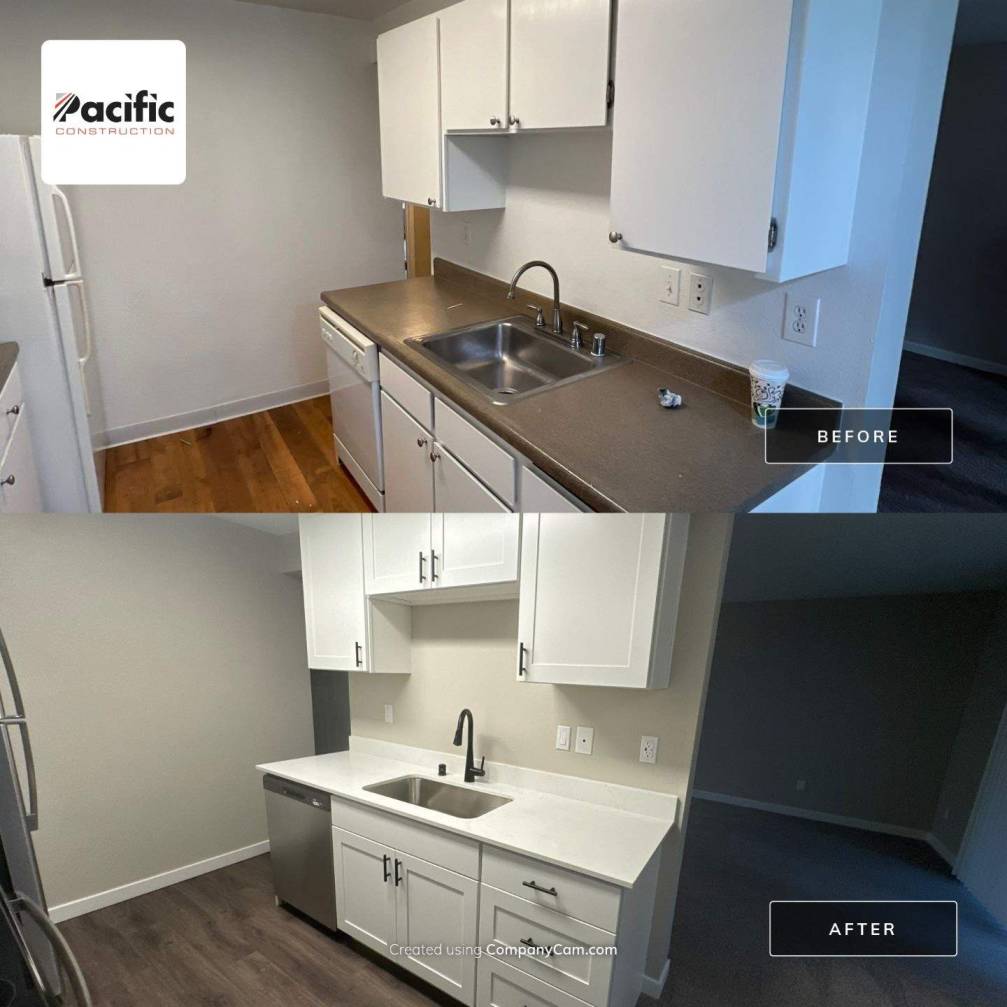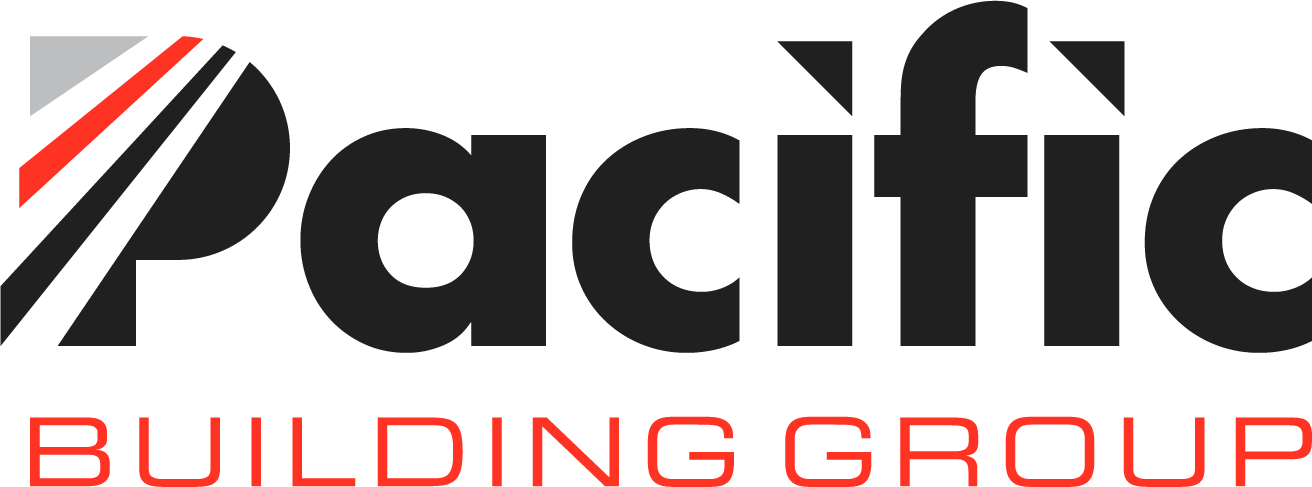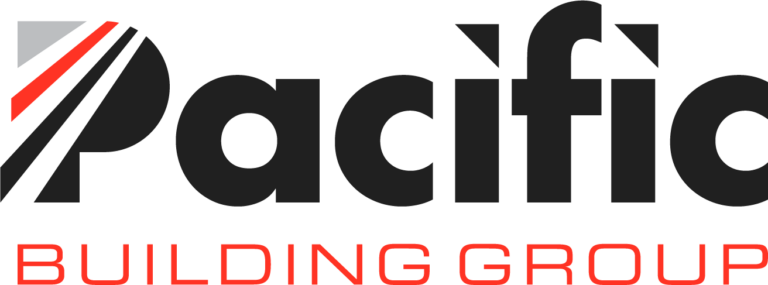Renovating a house is more than just a construction project—it’s an opportunity to transform your living space into something that truly reflects your style, meets your needs, and enhances your quality of life. Whether you’re modernizing a dated kitchen, expanding for a growing family, or simply updating for resale value, a successful renovation can make a world of difference. In this guide, we’ll explore why renovations matter, the benefits they bring, and the essential steps to help you turn your dream home into a reality.

What is House Renovation?
House renovation is the process of improving and upgrading a home’s structure, layout, and design. It can range from simple cosmetic updates, like repainting walls, to large-scale projects, such as remodeling entire rooms or addressing structural repairs. The goal is to breathe new life into your home, making it more functional, appealing, and comfortable for your lifestyle.
Why Renovating Your Home Can Enhance Value, Comfort, and Functionality
- Increase Property Value: Renovations can significantly boost your home’s market value, especially upgrades to kitchens, bathrooms, or curb appeal.
- Improve Comfort: Tailoring spaces to fit your needs, whether it’s creating more storage, better lighting, or energy-efficient upgrades, makes daily life more enjoyable.
- Enhance Functionality: Renovations can optimize layouts, make better use of space, or modernize outdated features for a more practical living experience.
Think of renovation as an investment not just in your property, but in your quality of life.
Planning Your Renovation
Effective planning is the cornerstone of a successful renovation. By setting clear goals, creating a realistic budget, and assembling the right team, you can ensure your project runs smoothly and meets your expectations.
Setting Goals
Before diving into the renovation, think about what you want to achieve. Are you looking for more space, a modern design, or a boost in resale value? Defining your goals upfront helps guide every decision throughout the process. For example:
- Need more space? Consider an open-concept layout or an addition.
- Want a modern look? Focus on updated finishes, smart technology, and contemporary designs.
- Increasing resale value? Kitchens, bathrooms, and curb appeal are always top priorities.
Knowing your “why” keeps the project focused and prevents unnecessary detours.
Budgeting
Budgeting is where reality meets your renovation dreams. Start by estimating the total cost, considering factors like:
- Project Size: Larger renovations naturally cost more.
- Materials: High-end finishes will increase expenses, but durability can save money in the long run.
- Labor: Skilled professionals come at a price, but their expertise ensures quality work.
- Permits: Don’t forget to account for the cost of required approvals.
Always include a contingency fund (10–20%) for unexpected expenses like structural issues or material delays. This extra cushion ensures you’re prepared for surprises without derailing the project.
Prioritizing Projects
If your budget doesn’t cover everything, prioritize the essentials first. Focus on areas that improve functionality or add significant value, such as:
- Structural repairs to ensure safety.
- Kitchens and bathrooms, which have the highest impact on resale value.
- Fixing issues like outdated wiring, leaky plumbing, or poor insulation.
Cosmetic upgrades, like paint or décor, can often wait until later if needed.
Hiring Professionals
Choosing the right team is crucial for a smooth renovation. When hiring contractors, architects, or designers:
- Do Your Research: Look for licensed and insured professionals with strong reviews.
- Request Multiple Quotes: Comparing prices helps ensure you get the best value.
- Check References: Speak with past clients to gauge their satisfaction.
- Communicate Clearly: Share your goals and budget upfront to ensure alignment.
A great team doesn’t just execute your vision—they help refine it, offering suggestions and solutions that you might not have considered.
With clear goals, a well-thought-out budget, and the right professionals on board, you’re setting the stage for a renovation that’s not only successful but also enjoyable. Remember, preparation is half the battle!
Preparing for Renovation
Preparation is key to ensuring your renovation project runs smoothly. From assessing the condition of your home to planning where you’ll live during the process, careful preparation sets the stage for success.
Inspection and Assessments
Before starting any renovation, it’s crucial to check the current condition of your home. Structural integrity, plumbing, and electrical systems are the primary areas to evaluate. Look for signs of damage, such as cracks in walls, leaks, or outdated wiring. A professional inspection can identify hidden issues that might need attention before construction begins, saving you time and money in the long run.
Obtaining Permits
Most major renovations require permits to ensure the work complies with local building codes and regulations. This might include:
- Structural Changes: Walls, foundations, or additions.
- Electrical and Plumbing Work: Rewiring or re-piping.
- HVAC Systems: Installing or upgrading heating and cooling systems.
Your contractor can usually handle the permit process, but it’s important to confirm all necessary approvals are secured to avoid delays or fines.
Creating a Timeline
A realistic timeline is essential for managing expectations. Work with your contractor to set clear milestones for each phase of the project, such as:
- Demolition: Removing old materials.
- Construction: Building or installing new elements.
- Finishing Touches: Painting, flooring, and décor.
Build in some flexibility to account for unexpected delays, like material shortages or weather issues.
Temporary Living Arrangements
Renovations can disrupt daily life, so it’s important to plan where you’ll live during the process. Ask yourself: Can I stay in my home or do I need to move out temporarily? Consider factors like noise, dust, and access to essential spaces like the kitchen or bathroom. If you stay, designate “renovation-free zones” where you can relax and keep things as normal as possible.
By addressing these key areas during preparation, you’ll set yourself up for a renovation that’s efficient, stress-free, and ultimately rewarding. A little planning goes a long way!
Key Areas to Renovate in a House
Focusing on the most impactful areas during a home renovation ensures you get the most value and functionality from your investment. Kitchens, bathrooms, living spaces, and exteriors are often the best places to start for noticeable and meaningful changes.
Kitchen Renovations

The kitchen is the hub of the home and a prime spot to invest in renovations. Whether you’re a culinary enthusiast or simply want a more welcoming space for family and friends, upgrading your kitchen can make a huge difference.
- Popular Layouts: Open-concept kitchens are highly desirable, creating a seamless flow between cooking, dining, and living areas. Adding an island can provide extra prep space and double as a seating area.
- Modern Appliances: Upgrading to energy-efficient appliances not only saves on utility bills but also brings a sleek, updated look to the space.
- Trendy Finishes: Two-tone cabinetry, bold backsplashes, and quartz countertops are popular choices for combining style and durability.
- Storage Solutions: Pull-out pantries, deep drawers, and built-in organizers can make even small kitchens feel spacious and functional.
Bathroom Upgrades
Bathrooms are no longer just utilitarian spaces—they’re personal retreats. Modern bathroom renovations focus on functionality, comfort, and style.
- Space-Saving Ideas: Wall-mounted vanities, floating shelves, and recessed niches maximize storage while maintaining a sleek look.
- Luxurious Touches: Features like walk-in showers with rainfall showerheads, freestanding bathtubs, or heated floors create a spa-like atmosphere.
- Energy Efficiency: Consider water-saving fixtures, LED lighting, and efficient ventilation systems to reduce costs and environmental impact.
- High-End Finishes: Marble tiles, frameless glass shower doors, and chrome or matte black hardware add a touch of elegance.
Living Spaces
Living rooms, family rooms, and other common areas are where life happens, making them important spaces to renovate for comfort and practicality.
- Open Floor Plans: Removing walls to create open, airy spaces can make your home feel larger and more connected.
- Lighting Enhancements: Adding recessed lights, statement fixtures, or dimmer switches can change the ambiance and functionality of the space.
- Décor Updates: Bold accent walls, modern furniture, or built-in shelves can completely refresh a room’s look.
- Flooring Choices: Hardwood floors or luxury vinyl planks are durable, stylish options that suit most living areas.
Exterior Improvements
Your home’s exterior is the first thing people see, and it plays a big role in curb appeal and overall value.
- Roof Repairs: A new or repaired roof not only protects your home but also adds to its aesthetic and structural value.
- Landscaping: A well-manicured lawn, vibrant flower beds, and thoughtful hardscaping like paths or retaining walls can make a huge difference.
- New Paint or Siding: A fresh coat of paint or updated siding can completely transform your home’s appearance.
- Front Door and Windows: Replacing an old front door or outdated windows boosts both curb appeal and energy efficiency.
By focusing on these expanded renovation areas, you’re setting the stage for a home that’s not just beautiful but also functional, efficient, and built to suit your lifestyle. These upgrades can enhance daily living while also boosting your property’s value.
Managing the Renovation Process
Taking charge of the renovation process helps ensure everything stays on track, even when challenges arise. Monitoring progress, addressing setbacks, and focusing on quality will set you up for success and satisfaction with the final result.
Monitoring Progress
Staying involved during your renovation is key to keeping everything on track. Regular check-ins with your contractor and designers allow you to stay informed about what’s happening and address any questions or concerns. Weekly updates are ideal, but for larger projects, daily progress reports might be necessary.
- Set Clear Milestones: Break the project into phases—demolition, structural work, installation, and finishing. This makes tracking progress easier.
- Use Tools: Online tools or apps like project schedules, photo updates, or shared documents can keep everyone in the loop.
- Ask Questions: If something seems off, speak up immediately. Addressing issues early prevents them from escalating.
By staying engaged, you can ensure your vision is executed as planned.
Handling Setbacks
No renovation is without its hiccups. Unexpected problems like hidden water damage, material delays, or budget overruns can arise. The key is to handle these issues calmly and efficiently.
- Anticipate the Unexpected: Always include a contingency fund in your budget—10-20% of the total cost—to handle surprises.
- Stay Flexible: Delays might mean adjusting timelines. Flexibility keeps the project moving without added stress.
- Collaborate on Solutions: Work with your contractor to find alternatives, such as switching to readily available materials or adjusting the scope temporarily.
Setbacks are normal, but proactive problem-solving ensures they don’t derail your renovation.
Ensuring Quality
The final stage of your renovation is all about polishing and perfecting the work. Conduct a thorough walkthrough to ensure everything meets your expectations.
- The Punch List: Identify any incomplete or imperfect work, such as touch-ups, misaligned fixtures, or cosmetic issues. This list will guide your contractor to make the final adjustments.
- Test Systems: Check that electrical outlets, plumbing, and appliances work flawlessly. Open and close windows, doors, and cabinets to ensure proper function.
- Review with Experts: Bring in a professional inspector, if needed, to confirm that structural and safety standards have been met.
Once all punch list items are resolved, your renovated space is ready to enjoy.
By keeping a close eye on progress, staying flexible when challenges arise, and demanding quality in the final stages, you’ll ensure a smooth renovation journey. The effort you put into managing the process pays off when you see your vision come to life.
Sustainable and Energy-Efficient Renovations
Incorporating sustainability and energy efficiency into your renovation isn’t just good for the planet—it’s also great for your wallet. Eco-friendly designs and energy-saving features can lower utility bills, reduce your carbon footprint, and even increase the value of your home.
Benefits of Eco-Friendly Renovations
- Significant Energy Savings:
Replacing old systems with energy-efficient alternatives, such as HVAC units or appliances, can lead to noticeable reductions in utility bills. For example, energy-efficient windows and insulation reduce the need for heating and cooling, saving money year-round. - Enhanced Comfort:
Sustainable upgrades improve the livability of your home. High-quality insulation and double-glazed windows help maintain a consistent indoor temperature, making your home more comfortable in every season. - Increased Home Value:
More buyers are looking for homes with eco-friendly features. Solar panels, energy-efficient systems, and sustainable materials add appeal, making your home more marketable in the future. - Environmental Responsibility:
Renovating sustainably means reducing waste, conserving resources, and lowering your carbon footprint. Every step you take contributes to a greener future.
Examples of Sustainable Upgrades
- Solar Panels:
- Install rooftop solar panels to generate clean, renewable energy for your home.
- Federal and local tax incentives can make solar panels more affordable while reducing electricity costs.
- Energy-Efficient Windows:
- Double or triple-glazed windows improve insulation and block noise.
- Low-emissivity coatings can further enhance thermal efficiency.
- Sustainable Materials:
- Use materials like bamboo, which grows rapidly, or reclaimed wood for flooring and furniture.
- Opt for recycled glass or quartz for countertops to minimize environmental impact.
- LED Lighting:
- Replace incandescent bulbs with LED lighting, which uses up to 75% less energy and lasts significantly longer.
- Smart lighting systems can further save energy by automating usage.
- Water-Saving Fixtures:
- Install low-flow toilets, showerheads, and faucets to conserve water without sacrificing performance.
- Consider systems like rainwater harvesting for irrigation or graywater recycling.
Start small by incorporating one or two sustainable features into your renovation, then expand as you see the benefits. Not only will you save money and increase comfort, but you’ll also contribute to a healthier planet for generations to come. Sustainable renovations are an investment in your home and the environment—a win-win that pays off in countless ways!
Post-Renovation Considerations
Completing a renovation is a big accomplishment, but the final steps after construction can make all the difference in how you enjoy your newly transformed space. Cleaning, decorating, maintaining, and documenting your renovation are essential to protect your investment and make it feel like home.
Cleaning and Decorating
Cleaning: Renovations can leave behind layers of dust and debris, even after a thorough contractor cleanup. Deep cleaning ensures your space is spotless and ready to use. Focus on:
- Floors: Vacuum carpets and mop hard surfaces to remove fine dust and construction residue.
- Windows and Fixtures: Clean windows, light fixtures, and vents to brighten up the room.
- Surfaces: Wipe down walls, countertops, and furniture to eliminate any lingering particles.
Decorating: Once the space is clean, it’s time to make it your own. Thoughtful decoration can elevate your renovation and reflect your style:
- Add accent pieces, like rugs, throw pillows, or artwork, that tie the room together.
- Choose cohesive color palettes for furniture and décor to complement your renovation’s design.
- Consider functional pieces like storage ottomans or shelving that enhance both aesthetics and usability.
These finishing touches make your renovated space feel comfortable and uniquely yours.
Home Maintenance Tips
Renovation upgrades are meant to last, but only with proper care and maintenance. By staying proactive, you can protect your investment and avoid costly repairs in the future.
- Regular Inspections:
- Check high-use areas, like kitchens and bathrooms, for leaks, cracks, or wear.
- Inspect appliances and fixtures for proper function.
- Seasonal Maintenance:
- Clean gutters, service HVAC systems, and inspect insulation to keep your home energy-efficient.
- Check windows and doors for drafts and reseal as needed.
- Deep Cleaning Schedule:
- Periodically deep clean floors, upholstery, and ventilation systems to maintain freshness and hygiene.
Staying on top of maintenance ensures your renovated areas stay as good as new.
Documenting the Renovation
Keeping detailed records of your renovation can save you headaches later. Proper documentation is essential for insurance, resale, and even personal satisfaction.
- Before-and-After Photos:
- Take photos of every angle before, during, and after the renovation. These visuals are great for showcasing improvements and tracking progress.
- Contracts and Permits:
- Store contracts, warranties, and permits in one place. These documents are vital for insurance claims and verifying the legality of the work.
- Invoices and Receipts:
- Keep itemized receipts for all materials and services. They’re helpful for tax deductions or resale negotiations to demonstrate the value added to your home.
Organizing these records in a digital or physical folder ensures they’re easy to access whenever needed.
By focusing on cleaning, decorating, maintaining, and documenting your renovation, you’ll set yourself up for years of enjoyment and value from your newly transformed home.
Renovating your home is a journey that combines creativity, planning, and execution. From setting clear goals and managing the process to adding sustainable upgrades and maintaining your new space, every step contributes to creating a home that’s both functional and beautiful. With careful attention to detail and the right team of professionals, you can transform your house into a space that truly reflects your style and meets your needs.
Whether you’re just starting or wrapping up your project, remember that every effort brings you closer to a home you’ll love for years to come!

